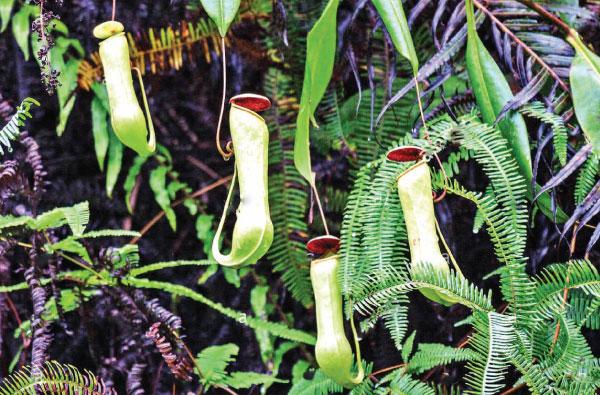
Did you know that some plants actually ‘eat’ animals? Yes, the plant world is amazing.
Some plants live in conditions where minerals are unavailable. They are therefore unable to take up minerals from the soil. These plants have developed a way of getting the elements they need. Their leaves have adapted to allow them to trap and kill animals. The most important element required is nitrogen.
Butterwort
Butterwort and Sun Dew grow in peaty bogs in the United Kingdom. The Venus Fly Trap grows in peaty bogs and waterlogged ground in the South East of the United States. Pitcher Plants are found in tropical rainforests, in marshes in the United States and in some swamps in Australia.
 |
| Butterworth plant |
The Butterwort has leaves arranged in a rosette around the flower stalks. On the upper surface of the leaf are hairs that secrete a liquid containing protein-digesting enzymes. The edges of the leaf turn up to make a lip that prevent the sticky liquid from flowing away into the soil. If an insect lands on the liquid it cannot escape. Its soft parts are digested and absorbed into the leaf.
Venus Fly Trap
Each leaf of the Venus Fly Trap is divided into two halves that can spring together in 0.03 seconds. There are three hairs on each half of the leaf which act as triggers. If an insect lands on the leaf and touches them the trap springs up. The spines on the edges of the leaf interlock and stop the insect escaping. A liquid is secreted from the leaf’s surface which digests and absorbs the insect’s body. In 24 hours the leaf opens again. After it has digested four insects the leaf dies and is replaced by a new one.
 |
| Venus Flytrap |
Pitcher Plant
The rainforest pitcher plants are able to climb trees because they have cords, called tendrils, that stick out of their leaves. They curl around twigs and branches and give the pitcher plant support. The end of a tendril forms a hollow tube with a lid. This tube is called a pitcher and when it is fully grown the lid opens and water collects in it. The largest pitchers can hold up to two liters of water. There are glands at the mouth of the pitcher which produce nectar to attract insects. The inside walls of the pitcher are very smooth so that the insect loses its grip and falls into the water. There are the hairs on the pitcher walls that point downwards to prevent the insect escaping.
The insect drowns. As its body decays it releases nutrients into the water. These are absorbed by the walls of the pitcher.
By Sudeepa Lakshan
